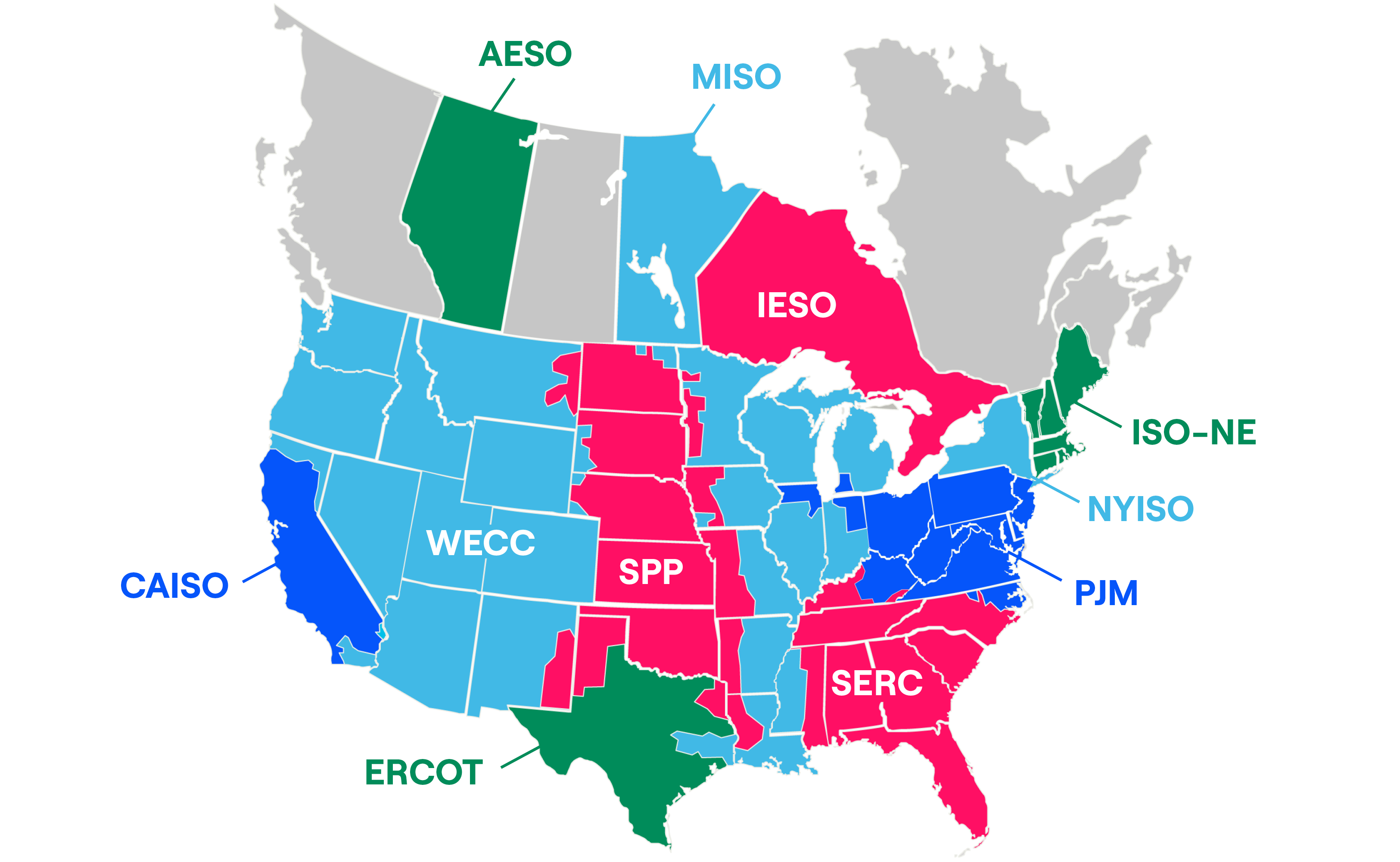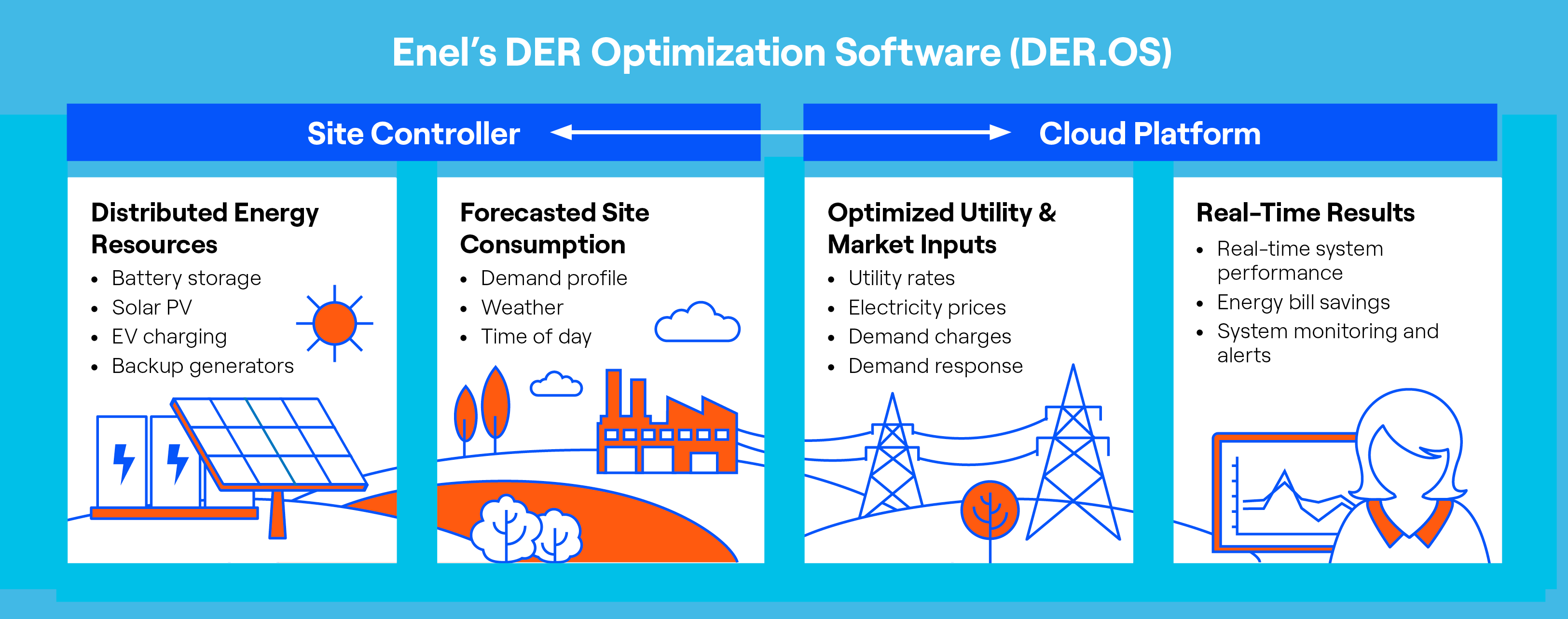Profiting from energy flexibility
Download our eBook to find out how to unlock the revenue potential in your energy infrastructure – and where you may already have that flexibility in your organization.
05 31, 2023
{{ content.description }}
With rising costs, more volatile energy prices, and new incentive programs, it’s more important than ever for organizations to manage their grid consumption strategically and capitalize on all existing value streams. Organizations today can lower their bills and/or earn new revenue by providing energy flexibility services – the ability to reduce or shift their energy usage to different times of day in response to external factors, such as energy pricing or weather. With the help of modern energy solutions and a knowledgeable partner, unlocking energy flexibility can be simple, with minimal disruptions to your daily operations.
It’s crucial to understand that the label of energy flexibility unites a wide range of solutions and that these solutions come in different forms. Some of these solutions may quietly work in the background and result in no noticeable change, like adjusting temperature setpoints without impacting occupant comfort. Others may occasionally require more effort from an organization, like reducing energy usage by temporarily turning off non-business-critical operations. Either way, your organization is in full control of what flexibility solutions are best suited for your energy, economic, and sustainability goals.
Most importantly, these solutions primarily leverage flexibility that organizations already have or can easily implement, even though they may not realize it yet. Below are four categories of flexibility solutions.
Energy efficiency is the use of less energy to perform the same task or produce the same result, as defined by the United States Office of Energy Efficiency and Renewable Energy. When buildings are not using energy efficiently, it has financial and environmental impacts. The U.S. Environmental Protection Agency estimates that 30% of the energy consumed in commercial and industrial buildings is wasted, so installing more energy-efficient assets in a facility can enable organizations to unlock significant economic benefits by conserving energy, while also helping to boost sustainability and increase occupant comfort.
Energy efficiency improvements have been an important concept for decades, and some organizations may have undertaken major projects in the past. But modern technology offers more efficiency upgrades than ever before. Buildings in every industry can benefit from improved energy efficiency, and organizations of every size can realize major bill savings, carbon reduction, and improved occupant safety and comfort. Typical energy efficiency projects extend far beyond switching out lightbulbs to LEDs – upgrade options also include chillers, HVAC systems, motors, compressors, water systems, and building envelope improvements.

Incentives for energy efficiency updates are common at both the state and federal level, most recently through the Inflation Reduction Act of 2022. An energy partner can help you to capture the full value available to you through energy efficiency incentives by comprehensively evaluating your energy infrastructure.
Demand response (DR) programs provide payments to large energy consumers that agree to reduce their energy demand during times of electricity grid stress to help the grid remain in balance and avoid disruptions.
There are a wide variety of DR programs around the United States and Canada. These programs differ in some basic ways, including frequency, duration, payment potential, and required response time. But a typical DR program works like this:
The commitments required by DR vary – there are many programs available that are low-level commitments, only having events a few times a year with short durations. But DR can be much more lucrative for energy users in regions with fast response and high frequency event programs.

Organizations that successfully incorporate DR into their energy plan can achieve lucrative earnings. And despite concerns about disruptions to daily operations, one demand response customer approaching $1 million in total earnings found it a simple experience, noting “to me it’s surprising that participation is not greater across the industrial sector. It’s not an extremely difficult thing to do – in our industry especially – to participate.” Customers like this and others found ways to utilize their existing operations like raising HVAC setpoints, shifting production, or temporarily turning off equipment in order to successfully and easily participate.
An energy storage system like a lithium-ion battery enables organizations to have greater control over when they use power. Organizations can significantly reduce their utility bills in this manner – in essence, an energy storage system allows organizations to store energy when prices on the grid are low, and then use that energy at a later time when prices on the grid are high. It can also allow organizations to earn more in revenue programs like demand response, without altering operations.
Energy storage has grown powerful in recent years because of modern optimization systems. These systems maximize the financial performance of energy storage through machine learning to match a facility’s needs. They strike the best balance between business priorities and the financial opportunities available to them.
Energy storage requires more upfront commitments that are not required in a solution like demand response, including on-site space and a long-term financial contract. But the tradeoff is more of a hands-off approach to the process of load shifting (using energy from the grid at different times than you normally would). The software orchestrates this process through optimal charge and discharge schedules, without the need for dedicated human intervention.

Beyond smart energy storage are smart appliances and devices, which can be individually operated to reach a collective net load target. For example, smart thermostats can be programmed to be responsive to open automated demand response (OADR) – a protocol to send signals to turn off connected devices during periods of high demand. This would enable large-scale residential and small commercial aggregation of distributed assets, and even in some cases works for industrial-scale use cases.
Equipment can be also operated at the building or facility level. For example, a building management system (BMS) is a control system that monitors building operations like power use, lighting, and HVAC systems. Like energy storage, these systems typically operate in an automated fashion, and as such can optimize the building’s power use without any disruption to a building’s daily operations. These are attractive options for organizations that are looking to optimize energy use without any disruption.
Building automation can even make DR participation easier and more successful. Leveraging OADR and automated scripts make it possible that organizations never need to "lift a finger” to participate in DR. The entire demand reduction is pre-determined and can be automatically triggered when sites are called on to participate in a DR event, although customers can still retain the ability to opt-out of dispatches due to production constraints, safety concerns, or other reasons when needed.
Using building automation systems in DR has become more prevalent, and in general are important to increasing flexibility. These systems open new doors to organizations, whether that’s finally allowing them to participate in the more lucrative fast or frequent DR programs, or just giving them peace of mind when they are called upon to participate in DR events throughout the season.
Automation can be accomplished at the city level as well, creating virtual power plants (VPPs) that enable smart cities that operate a holistic manner – from smart public lighting to architectural lighting, electric public transportation, on-site renewable energy generation and storage, and energy efficiency for public buildings. Energy efficiency improvements, in particular, address energy conservation and can include replacing existing lighting systems with the latest generation LED systems, installing solar thermal and heat pumps for reduced energy consumption from the grid, and adding thermal insulation for the building to avoid heat losses.
Energy flexibility solutions have been around for decades, and by this point organizations in every industry use them to improve their energy strategy. In our eBook “Profiting From Energy Flexibility,” we go more into more depth on these solutions and how organizations can use them to earn new revenue or reduce their energy bills. Download our eBook now to find out more about energy flexibility and where you may already have flexibility in your organization’s energy infrastructure.
But it’s also important to find a partner who has the experience and expertise to know which energy solutions will best fit your geography, industry, and specific organizational circumstances. Get in touch with Enel to find out how you can improve your energy economics and maximize all value streams available to you with energy flexibility solutions.